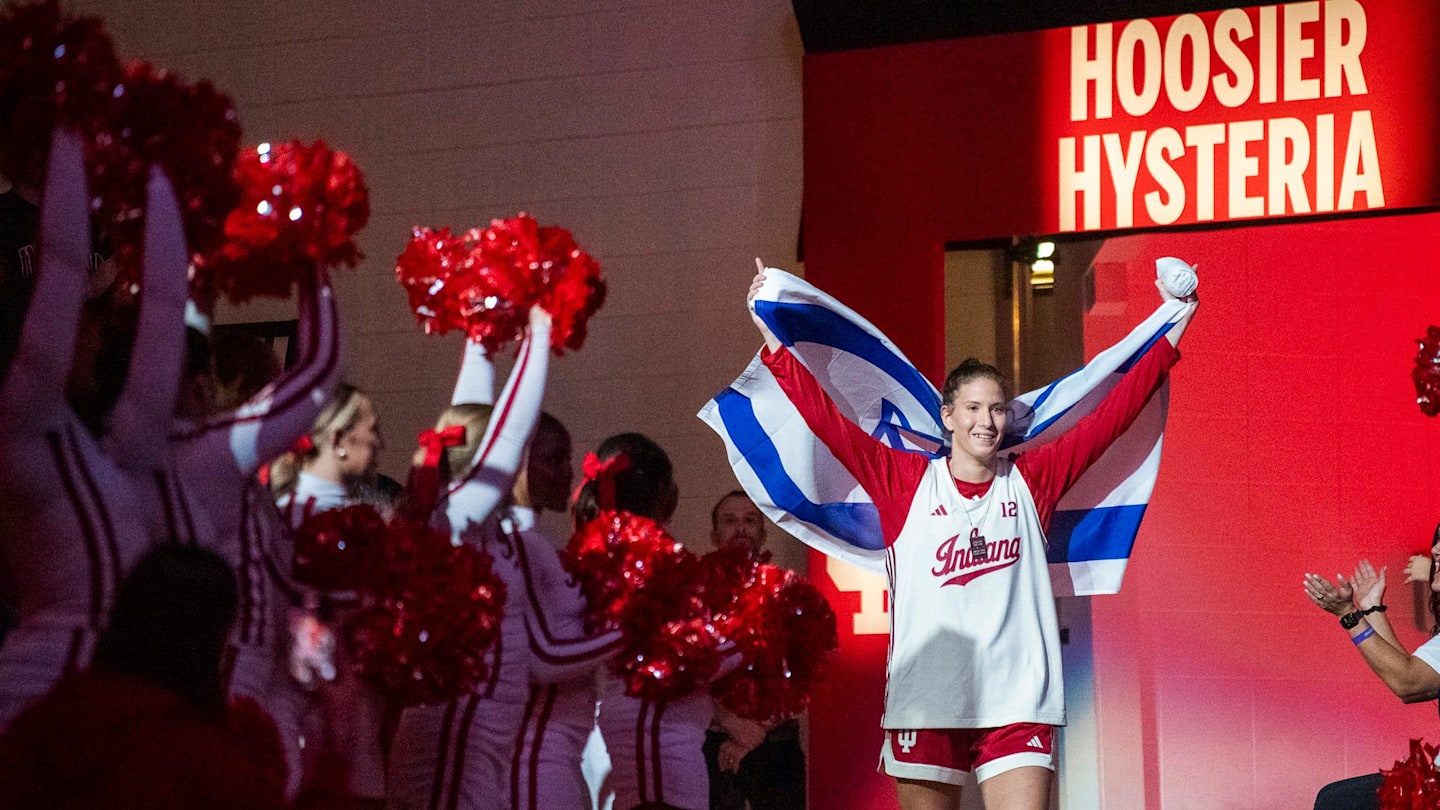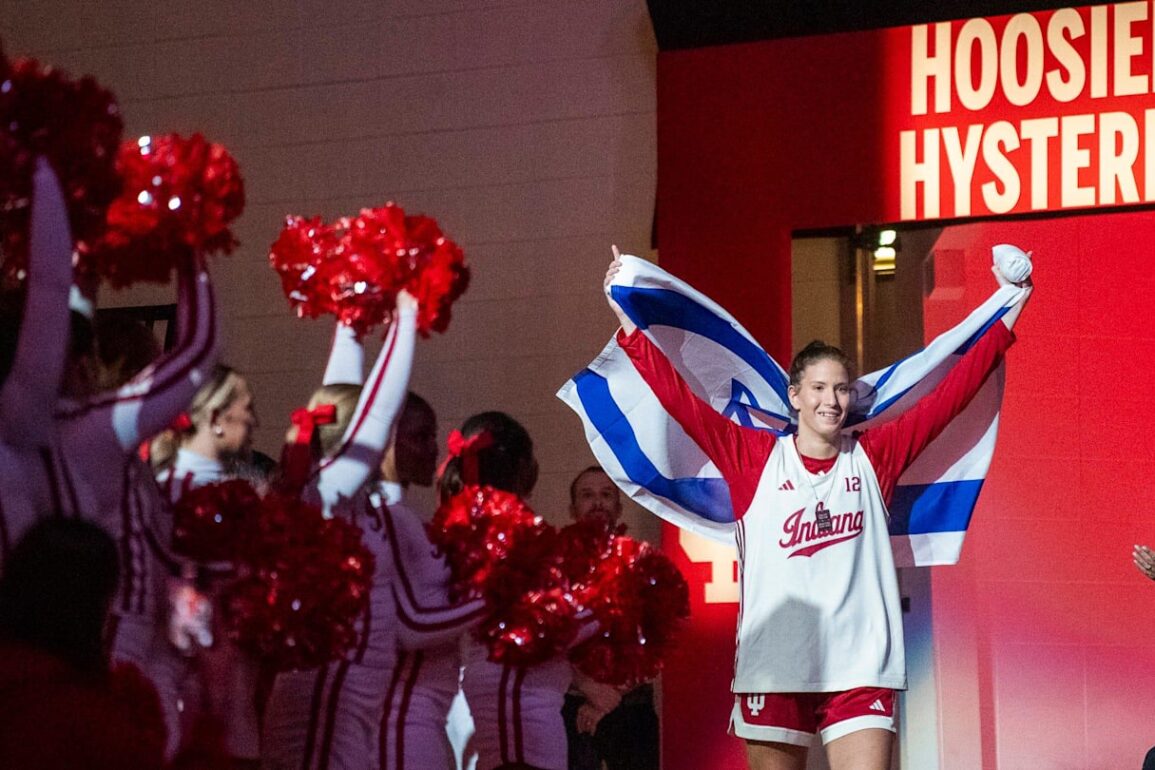
BLOOMINGTON, Ind. – One of the most prominent Indiana University athletes over the last three seasons was women’s basketball player Yarden Garzon.
A native of Israel, Garzon developed as a younger player as most players do who come from the European zone of competition (which Israel participates in) – she played with her Israeli professional team. In Garzon’s case, it was Maccabi Ironi Ramat Gan.
Overseas, there is little-to-no separation of professional and amateur standing as we know it here. Garzon played as a professional before she came to Indiana from 2022-25. She has since transferred to Maryland.
Indiana did not have to pay Maccabi Ironi Ramat Gan any money to release Garzon to play for the Hoosiers – and FIBA secretary general Andreas Zagklis wants to change that. FIBA, translated as the International Basketball Federation, governs the sport around the globe.
During FIBA’s Mid-Term Congress in Bahrain last weekend, Zagklis noted that NCAA schools are getting away with procuring talent without having to pay for it. That runs counter to the way the international basketball system typically works.
“The colleges in the NCAA are getting closer every day to being commercial entities or professional clubs,” Zagklis said in a speech to the Congress. “That’s challenging our ecosystem for the simple reason that our ecosystem is based on one principle — you can transfer as long as contracts are respected. Agreements must be respected.”
Zagklis was noting that in the United States college basketball players are compensated via name, image and likeness, and if approved, by the schools themselves if the House settlement is approved to govern college sports.
“In order to transfer from one professional basketball institution to another de facto professional basketball institution, there should be a process, call it a Letter of Clearance,” Zagklis continued.
“There must be clearance from the exiting club and national federation, and there needs to be some safeguards of where the player is going: what the conditions there will be, what will be the availability for the national team, and what is the recompense for the FIBA ecosystem, our clubs, our leagues, our federations and their members that have invested for someone who started playing at the age of 9, 10, or 11 and now ends up with a 7-figure check in the hands at the age of 18,” Zagklis said.
Zagklis said FIBA will formally engage the NCAA about this process.
“It won’t be easy, because this is an environment that still hasn’t decided for itself how it will regulate itself,” Zagklis said.
The way international clubs and organizations usually make this work is via a transfer fee. They are most commonly known in soccer, but are used in other sports, too.
Transfer fees are largely unknown in American sports, though baseball teams occasionally have paid them to Japanese teams to get highly coveted players. They are typically called posting fees, but the principle is the same. NBA teams have also paid transfer fees for access to international talent.
With a transfer fee, the team that wants the player pays the club that has rights to them. That fee is independent of the salary paid to the player.
Soccer transfer fees are astronomical, very often into nine figures for the best talent. Basketball transfer fees are often much lower but not insignificant.
However, given the demand for international women’s players, their clubs would almost certainly set high fees for American colleges interested in talent they developed.
Using Garzon as an example, even what may seem like a modest fee in the international marketplace would not be insignificant for a college athletic department. If Indiana had to pay $50,000-$200,000 to get access to Garzon, would it have bothered?
This potential transfer fee would affect both men’s and women’s basketball. In the immediate environment and in the recent past, Indiana’s women’s basketball team has had more international players than the men’s team.
Only one player currently on the women’s basketball roster, Valentyna Kadlecova, has come to Indiana directly from a European club team.
However, transfers Edessa Noyan and Phoenix Stotijn did play for club teams in Sweden and the Netherlands, respectively, before they came to the United States to play college basketball. Virginia (Noyan) and Arkansas (Stotijn) would have had to pay transfer fees to gain access to those players.
Under FIBA’s proposal, it is possible Indiana would have had to pay a fee to their clubs too, depending on how their agreement to come over to the United States were structured. There is no international equivalent to the transfer portal, so it’s unknown how that might factor into transfer fees.
What is clear is that the international organizing body wants NCAA teams to pony up to have access to international players. That will present a challenge for basketball teams that like to rely on international talent – much as Indiana women’s basketball team has done.
This post was originally published on this site be sure to check out more of their content.





